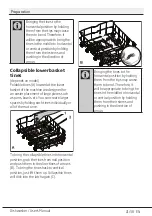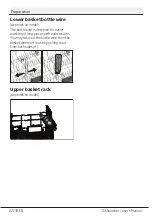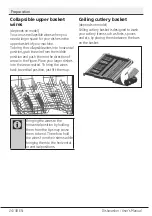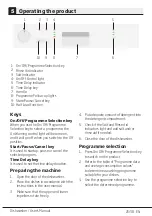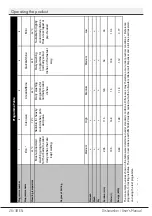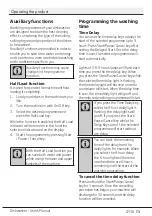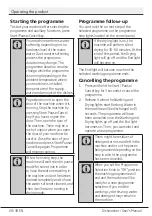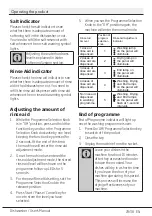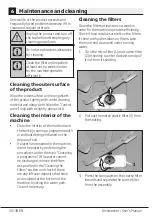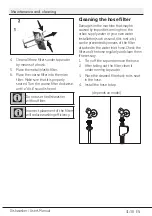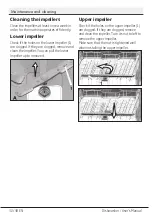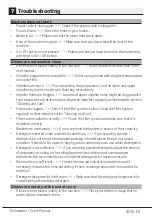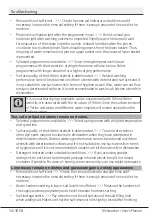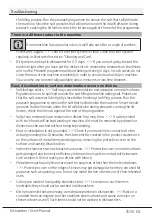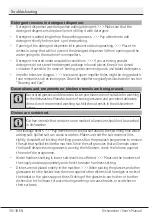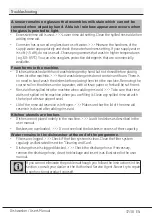
Dishwasher / User’s Manual
35 / 38 EN
Troubleshooting
the filling process. Run the prewash programme to remove the salt that spilled inside
the machine. Since the salt granules that will remain under the lid will dissolve during
prewash, causing the lid loosen, check the lid once again at the end of the programme.
There is a different odour in the machine
C
A new machine has a peculiar odour. It will fade out after a couple of washes.
• Filters are clogged. >>> Check if the filter system is clean. Clean the filter system
regularly as illustrated in section “Cleaning and Care”.
• Dirty dishes are kept in dishwasher for 2-3 days. >>> If you are not going to start the
machine right after you have put the dishes into it, remove the remnants on the dishes
and run the Prewash programme without detergent every 2 days. In such cases, do not
close the door of the machine completely in order to avoid odour build up in machine.
You can also use commercially available odour removers or machine cleaners.
Rust, discoloration or surface deterioration occurs on dishes
• Salt leakage exists. >>> Salt may cause deterioration and oxidation on metal surfaces.
Pay attention not to spill salt around the salt filling hole while adding salt. Make sure
that the salt reservoir lid is tightly closed after finishing the filling process. Run the
prewash programme to remove the salt that spilled inside the machine. Since the salt
granules that will remain under the lid will dissolve during prewash, causing the lid
loosen, check the lid once again at the end of the programme.
• Salty food remnants have remained on dishes for a long time. >>> If cutlery soiled
with such foods will be kept waiting in machine, dirt must be removed by prewash or
dishes must be washed without being kept waiting.
• Electric installation is not grounded. >>>Check if your machine is connected to the
actual grounding line. Otherwise, the static electric created in the product causes arcs
on the surfaces of metal items creating pores, removing the protective cover on the
surface and causing discoloration.
• Intensive cleansers such as bleaches are used. >>> Protective cover on metal surfaces
gets damaged and looses its efficiency in time when it gets in contact with cleansers
such as bleach. Do not wash your dishes with bleach.
• Metal items particularly knives are used for purposes other then their intended uses.
>>> Protective cover on the edges of knives may get damaged when they are used for
purposes such as opening cans. Do not use metal kitchen utensils out of their intended
uses.
• Cutlery are made of low quality stainless steel. >>> Corrosion on such items is
inevitable; they should not be washed in dishwashers.
• Kitchen utensils that are already corroded are washed in dishwasher. >>> Rust on a
corroded item can migrate to other stainless steel surfaces and cause corrosion on
those surfaces as well. Such items should not be washed in dishwashers.

